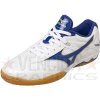Foods that you buy raw and cook at home actually turn out to be cheaper. Its cheaper to buy ingredients to make bread at home than to buy it. Whole chicken costs less at the grocery store than pre-cut, cleaned, etc. Steel cut oatmeal is good for you, tastes better, and is cheaper in bulk than buying breakfast cereal. In addition, cutting out the chips, candy, etc will actually save you money. If you bake whole wheat bread at home, cook fresh meats, eat raw veggies and fruit, and incorporate some milk/yogurt, you will be well on your way. Cut down on the portion sizes, and keep snacks handy for between meals - I like nuts (almonds), fruit and plain yogurt.
Whole grains are so much better for you, if you don't enjoy the taste, give it some time. I love my whole wheat and whole grain breads. The one thing that took me a lot longer to cut down was sugar. Even though I had reduced my sugar intake over the summer, I still added sweetener to my coffee and sugar to my chocolate milk. I've now cut down the sweetener in my coffee drastically, and completely eliminated the sugar in my chocolate milk.
In terms of exercise, you should have 2 goals - a) create a caloric deficit so that you can lose weight and b) increase your fitness level so that as the weeks roll by, you are able to exercise at longer / more intense levels to continue to create that caloric deficit. While I like the idea of taking it slow and not overreaching, I'm not sure that walking for 6 months will get you there. My suggestion is to start with 20min jogging sessions, jog as slow as you possibly can without actually walking. If you don't work up a sweat, the intensity is not enough to lose weight. Alternate steady pace jogging sessions with intervals, where you jog at a slightly faster pace for 3min, then fall back to a slower pace for 2min. Every week or two, up the interval from 3min to 4min, then to 5min, etc, until you get to the point where the higher intensity becomes your steady pace intensity for 20min. After the first month, up the total time to 25min, the next month up it to 30min, etc.
I'd also suggest to add a good 15-20min of stretching, it will help to develop some flexibility which will make you feel better and help avoid injuries.
One more thing to caution, since you mention getting up earlier in the morning. You'll need to ensure that you are getting enough sleep at night, and this may mean getting to bed early. You will not be able to keep up the intensity or the motivation if you are constantly fatigued due to sleep deprivation.
Whole grains are so much better for you, if you don't enjoy the taste, give it some time. I love my whole wheat and whole grain breads. The one thing that took me a lot longer to cut down was sugar. Even though I had reduced my sugar intake over the summer, I still added sweetener to my coffee and sugar to my chocolate milk. I've now cut down the sweetener in my coffee drastically, and completely eliminated the sugar in my chocolate milk.
In terms of exercise, you should have 2 goals - a) create a caloric deficit so that you can lose weight and b) increase your fitness level so that as the weeks roll by, you are able to exercise at longer / more intense levels to continue to create that caloric deficit. While I like the idea of taking it slow and not overreaching, I'm not sure that walking for 6 months will get you there. My suggestion is to start with 20min jogging sessions, jog as slow as you possibly can without actually walking. If you don't work up a sweat, the intensity is not enough to lose weight. Alternate steady pace jogging sessions with intervals, where you jog at a slightly faster pace for 3min, then fall back to a slower pace for 2min. Every week or two, up the interval from 3min to 4min, then to 5min, etc, until you get to the point where the higher intensity becomes your steady pace intensity for 20min. After the first month, up the total time to 25min, the next month up it to 30min, etc.
I'd also suggest to add a good 15-20min of stretching, it will help to develop some flexibility which will make you feel better and help avoid injuries.
One more thing to caution, since you mention getting up earlier in the morning. You'll need to ensure that you are getting enough sleep at night, and this may mean getting to bed early. You will not be able to keep up the intensity or the motivation if you are constantly fatigued due to sleep deprivation.



